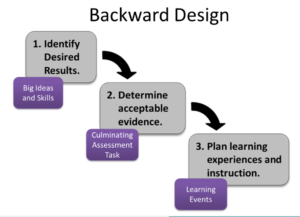Traditionally, university boards ask their new presidents to begin a strategic planning process upon their arrival at an institution In a desire for the process to be inclusive, sometimes it becomes unwieldy, too broad to be truly actionable or too all-encompassing to provide a clear roadmap for the institution’s next chapter. On the flip side, a less inclusive process often yields critiques of a lack of transparency and a “top-down” process that does not adequately reflect the institution’s true character and history.
So what’s a new leader to do to create a modern-day strategic plan that both adequately reflects all the institution is and has accomplished, while engaging outside perspectives to nudge the institution toward an innovative, viable and more vibrant future?
I argue that in the post-COVID world, the traditional “forward design” strategic planning process no longer works—given the added workload required and financial constraints all but the most elite institutions face. End results are often unachievable, overly complex, burdensome or only incrementally different. Instead, forward-thinking institutional leaders should take inspiration from their faculty colleagues and embrace the backward design we more often see in syllabus writing to create an engaging, transparent and accessible process for strategic planning.
More from UB: How schools can streamline their alternative credentials programs
A successful backward design strategic plan clarifies and codifies what is special or unique about an institution and addresses:
- Why prospective students would want to attend
- What type of faculty will thrive and contribute
- What types of employers and industries will be the best partners
- What types of funders will be the most likely and productive collaborators
- If we were to rebuild the institution from the ground up, what it would it look like
A backward design strategic plan should start with leaders engaging their institutions in the very focused and meaningful work of determining a limited number of big-picture, achievable outcomes, ideally by spending a concentrated and limited period of time meeting with constituents and stakeholders throughout the campus community.
Then, leadership should engage the existing shared governance structures to create a streamlined process toward agreement upon what would constitute evidence of achievement of the determined outcomes. Only then would broader campus working groups need to be constituted to hammer out details of what it will take to move the institution toward the selected outcomes.
By borrowing from a successful pedagogical tool introduced by faculty colleagues and designing backward, institutions will free themselves up to strategically plan forward with greater purpose, efficiency, agility and opportunity. 
1 Identify desired results
For a truly successful strategic planning process, we must follow the approach taken by Renaissance genius Leon Battista Alberti, who wrote a version of “change where we stand, to change what we see.” Renaissance scholars and artists like Filippo Brunelleschi used artificial perspective to “see” beyond their paintings and to envision the future. We also must allow ourselves to change our singular viewpoint about how we have done things, who we are and who we think we can be.
2 Determine acceptable evidence
Once the design has been shared, polished and tweaked amongst actively motivated and engaged faculty and staff from across campus, we must engage pre-existing governance structures to determine what constitutes evidence of achieving the determined outcomes.
3 Decide what actions, decision and investments are needed to get us there
Before finalizing a plan, we must consult with stakeholders across campus to determine if all the goals are feasible, and with financial partners on campus to decide on the financial strategy for achieving them, including what reductions or shifts must be made elsewhere in the institution to support these priorities. We must lay out a phased timeline for these outcomes in manageable chunks and determine tactical wins throughout to buoy the community as it does the heavy lifting.
In the ageless words of Lewis Carroll, “If you don’t know where you are going, any road will get you there.” A Strategic Plan, designed backward, will always take you forward precisely to where you need to go.








